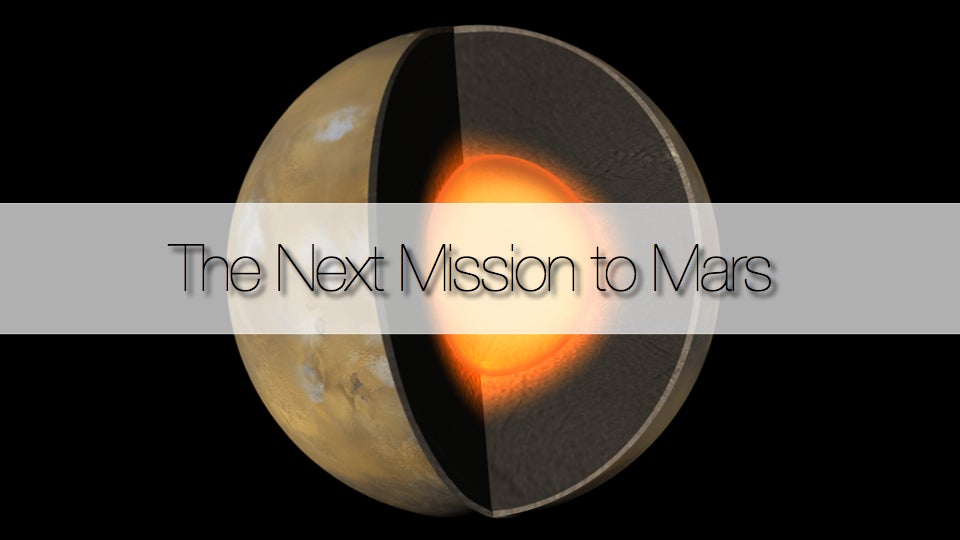
Hot on the heels of Curiosity's flawless landing, NASA has just announced a brand new mission to Mars, one that will provide us with our best look yet into the Red Planet's mysterious interior.
The mission is named InSight, and it's set to launch in 2016.
InSight will mark the 12th project to be selected from NASA's series of Discovery-class missions, an assortment of cost-capped expeditions with "highly focused scientific goals," geared toward improving the understanding of our own solar system. (According to the Agency, the cost of the mission is capped at $425 million in 2010 dollars. Financial reassessments will be conducted sometime next year.)
In a press conference held yesterday afternoon, NASA director of Planetary Science Jim Green explained that the goal of InSight will be to probe deeper into Mars' interior than ever before, in the interest of better understanding whether Mars' core is solid, or liquid like Earth's.
"We're really clueless about its interior," explained Green. The InSight mission will seek to correct that.
According to Green, the spacecraft will set down at or near an equatorial region of the planet, and prospective landing sites will have to be relative flat. "The launch window is estimated to be in the month of March, 2016," he continued, "with landing in the month of September, 2016. It will take one Mars year of science — so about 680-or-so-days — [for InSight] to meet its primary objectives."
This video, courtesy of NASA, sheds some light on the InSight spacecraft's proposed design and scientific suite, which the Agency says will carry four instruments:
SEIS: To capture Mars' pulse, or its internal activity, InSight will carry a seismometer called SEIS to the surface of the Red Planet. SEIS will take precise measurements of quakes and other internal activity on Mars to better understand the planet's history and structure.HP3: To take Mars' temperature, a key indicator of planetary evolution, InSight will deploy a heat flow probe on the surface of Mars. The instrument, known as HP3, will hammer five meters into the Martian subsurface, deeper than all previous arms, scoops, drills and probes, to learn how much heat is coming from Mars' interior and reveal the planet's thermal history.RISE: To track Mars' reflexes, or the way it wobbles when it is pulled by the sun, an investigation called RISE will precisely measure the Doppler shift and ranging of radio communications sent between the InSight lander and Earth. By tracking wobble, scientists can determine the distribution of the Red Planet's internal structures and better understand how the planet is built.Cameras: Insight will incorporate a camera, similar to the "Navcam" engineering cameras onboard the Mars Exploration Rovers (MER), mounted on the arm of the lander that will serve to capture black and white images of the instruments on the lander's deck and a 3-D view of the ground where the seismometer and heat flow probe will be placed. It will then be used to help engineers and scientists guide the deployment of the instruments to the ground. With a 45-degree field of view, the camera will also provide a panoramic view of the terrain surrounding the landing site.
InSight was one of three mission proposals selected for funding consideration in May 2011. The other two proposals were for missions to a comet and Saturn's massive moon, Titan.
"This was the most competitive mission among the three in the Discovery-class running." explained NASA's John Grunsfeld, Associate Administrator for the Science Mission Directorate.
"The exploration of Mars is a top priority for NASA, and the selection of InSight ensures we will continue to unlock the mysteries of the Red Planet and lay the groundwork for a future human mission there," said NASA Administrator Charles Bolden in a statement released yesterday afternoon. "The recent successful landing of the Curiosity rover has galvanized public interest in space exploration and today's announcement makes clear there are more exciting Mars missions to come."

0 ความคิดเห็น:
แสดงความคิดเห็น